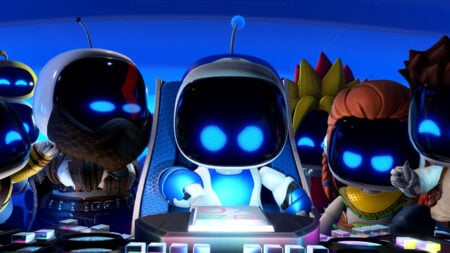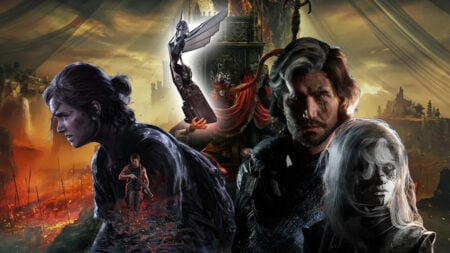Skip To...
The five-generation-long wars waged by Sony and Microsoft have officially come to an end; not with a bang, but with a whisper. Xbox ditches hardware for Game Pass and Play Anywhere ecosystem while PlayStation is pivoting towards a ‘platform and engagement’ business model. But in the middle of this big corporate group hug, Nintendo‘s still standing off to the side of the console war, clutching its hardware like a kid refusing to share his toys.
Team Green and Blue are now happily trading their games, even across the pond into PC. Everyone’s smiling, shaking hands, and cashing in — developers, publishers, and players alike. I mean, who doesn’t love cross-platform play? And then there’s Team Red, refusing to let its Mario, Zelda, or Pikachu so much as peek at Steam. Why the stubbornness, you might ask? The answer might be way more straightforward, and deeply rooted in Nintendo’s history, than you’d expect.
130 Years of Making Toys You Can’t Put Down

One thing many gamers might not realize, or have just forgotten, is that Nintendo’s roots aren’t in video games at all. They’re in toys. Founded in 1889, the company spent decades making Japanese hanafuda playing cards and dreaming up quirky gadgets for kids to play with. Such as the extendable Ultra Hand and the lovebirds’ companion machine, Love Tester. All sorts of oddball stuff you’d find in the ads section of a comic book.
Not until the late ’70s did Nintendo crank out the Game & Watch; then, riding the arcade boom, they decided something radical with the NES. Turns out, taking dingy arcades into the living room and cashing in after the 1983 crash might be the most brilliant move the company ever pulled. It cemented them as a household name for generations to come.
Later, Sony and Microsoft (and SEGA) came and kickstarted what we know as the console wars. While the others were busy keeping up with high-end arcades and PCs, Nintendo probably had another idea. The idea might be that gaming consoles aren’t about the fastest chips, but about making the most fun, irresistible toy you can’t help but own. The game software itself is the additional-but-essential source to power the toy. You know, like those ‘batteries not included’ warnings for remote-controlled cars.
That ‘toy-first’ DNA runs deep, and it became even clearer after the PS2 absolutely crushed the GameCube. Nintendo stopped chasing raw power, looked back at the Game & Watch, and went its own way. The result? Nintendo DS, with its quirky dual-screen and touch capabilities. Wii’s motion controls turned the whole living room into a playground. Switch lets you play 8-player Smash Bros. without lugging around a TV and a brick of hardware. Who doesn’t want to have and show off one of those?

Speaking of games, while I counted them as ‘additional,’ the company’s exclusive IPs are another essential reason they’re not backing down. Mario, Pokemon, Zelda, Metroid, even newer hits like Splatoon don’t just sell products, they sell identities.
These franchises have been carefully refined and reinvented — and in turn, adored for decades. They’ve crossed generations without losing their charm even outside of the gaming circle; your parents, your kids, and even your grandma probably know them. Compare that to Halo‘s Master Chief, which has lost much of its cultural punch by the time Xbox One rolled in.
Or PlayStation, which still can’t point to a single long-lasting mascot. Well, except for Kuro and Toro, which are only familiar to hardcore Japanese fans anyway.
As such, it can lock its franchise because it knows those icons are strong enough to make people buy the toy to play with them. You want Tears of the Kingdom? Well, you’d better buy a Switch or a Switch 2. There’s no day-one multiplatform release, no cloud version playable on your phone. If you want Nintendo’s games, you need Nintendo’s console, and that’s that.
Playing the Long Game Without Breaking the Bank

Nintendo also isn’t trapped chasing ‘infinite growth’ like its rivals. As the late Hiroshi Yamauchi once warned, the ever-ballooning development costs and delays are a vicious circle that comes from chasing ‘amazing graphics and sound.’ To this day, PlayStation and Xbox are still pouring hundreds of millions into doing precisely that. From cinematic blockbusters like Horizon and Hellblade to live-service hamster wheels like Destiny and Sea of Thieves.
The Kyoto-based company dodged that trap, and it’s still paying off. Mario Kart 8 Deluxe has raced past 76 million copies sold, an absurd feat for an eight-year-old console game. Meanwhile, Animal Crossing: New Horizons has sold nearly 48 million units, pulling in over $2 billion in revenue in 2021. And that’s without a single loot box or battle pass in sight. We’re not even talking about how the Switch is sold at a profit — $42 per unit — and still making money to this day.
PlayStation and Xbox have every reason to slow down expensive hardware production and sell software to all machines capable of playing them, especially when Xbox Series X is estimated to cost $699 to produce and ship. But not Nintendo; not when both the cheap toy console and iconic supplemental games cannot stop printing money.
That’s not to say Nintendo is allergic to going outside of its comfort zone. If it suits its philosophy of selling Nintendo-branded ‘toys,’ then it’ll do it.
China-exclusive iQue consoles? Check. Arcade collabs with Bandai Namco? Absolutely. The infamous Philips CD-i misstep in the ’90s? Regrettable, but still counts. Experimenting with mobile releases is not off the table as well, as shown by Mario Kart Tour, Pikmin Bloom, and the short-lived Dragalia Lost.

But these side hustles are never the main attraction. You’ll never get the same chaotic experience from a mobile Mario Kart as you will sitting on your couch with a Joy-Con in your hands.
And clearly, this strategy works. Is there a Horizon Zero Dawn theme park ride where you shoot at robot dinosaurs somewhere? A Halo-themed roller coaster with Warthog-shaped cars? Nope. But Mario and Donkey Kong? They’ve got their spots in Universal Studios, just like Harry Potter. Try competing with that.
Maybe someday, when the world moves on from games to shiny new toys, Nintendo will hang up its gloves and truly end the console war. But until then, I’m sure it doesn’t see the reason to do that and will keep making virtual toys no one else can make. And making sure you can only buy the ‘batteries’ from it while they’re at it.










